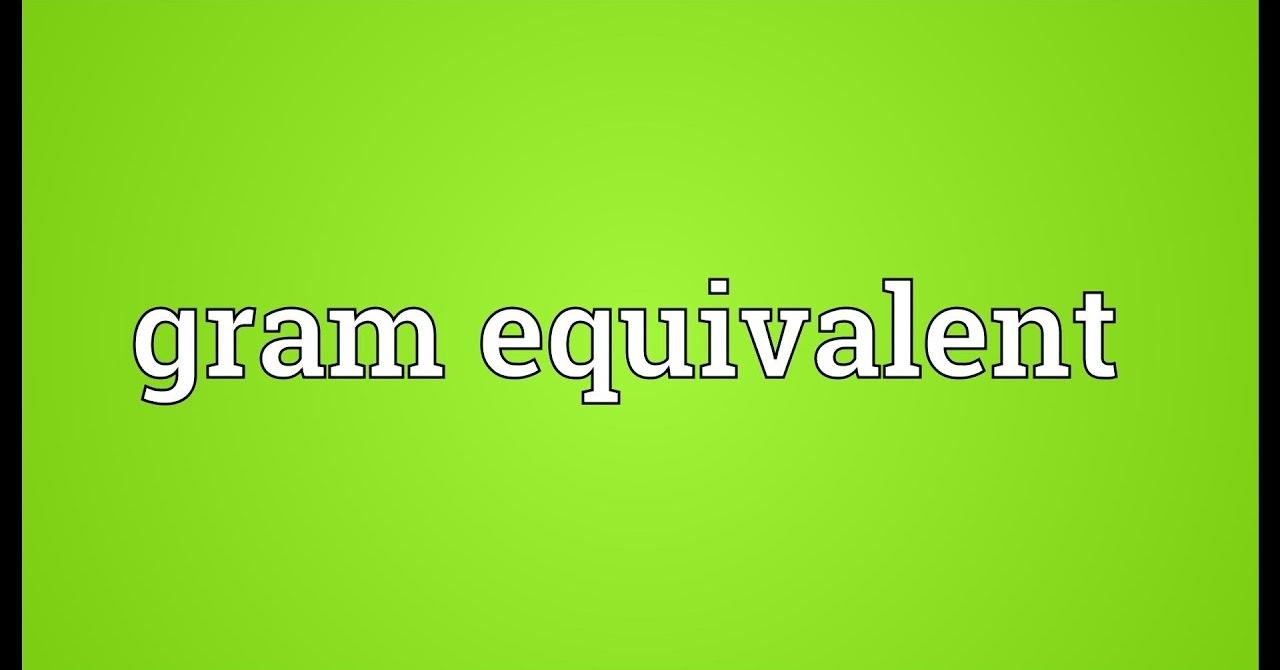Are you curious to know what is gram equivalent? You have come to the right place as I am going to tell you everything about gram equivalent in a very simple explanation. Without further discussion let’s begin to know what is gram equivalent?
In the realm of chemistry, precise measurements are paramount, and the concept of gram equivalent plays a crucial role in quantitative analyses. This article aims to demystify what gram equivalent signifies, exploring its definition, formula, and its significance in both Class 11 and Class 12 chemistry.
What Is Gram Equivalent?
Gram equivalent is a concept in chemistry that refers to the amount of a substance capable of transferring one mole of electrons or reacting with one mole of hydrogen ions. Understanding gram equivalent is essential for accurate quantitative assessments in chemical reactions.
What Is Gram Equivalent Formula?
The formula for calculating gram equivalent is straightforward:
Gram Equivalent=Grams of Substance/Equivalent Weight
The equivalent weight is a key factor in this formula, representing the weight of a substance that can react with or replace one mole of hydrogen ions.
What Is Gram Equivalent Class 12:
In Class 12 chemistry, students delve into the nuances of gram equivalent as part of their advanced studies. The application of this concept becomes pivotal in understanding stoichiometry, redox reactions, and titrations.
What Is Gram Equivalent Class 11:
The groundwork for comprehending gram equivalent is laid in Class 11 chemistry. Students learn about the foundational principles that set the stage for more complex applications in subsequent classes.
What Is Gram Equivalent Weight?
Gram equivalent weight, often referred to as equivalent weight, is the weight of a substance that can either donate or accept one equivalent of protons (hydrogen ions) during a chemical reaction. It is a key parameter in calculating gram equivalent.
What Is Equivalent Weight?
Equivalent weight is synonymous with gram equivalent weight and represents the weight of a substance that can participate in one equivalent of a chemical reaction. It is a critical factor in various stoichiometric calculations.
What Is Gram Equivalent Of Solute?
The gram equivalent of a solute is the amount of the solute that provides one equivalent of reactive species during a chemical reaction. This measurement is pivotal in determining the concentration and reactivity of substances in a solution.
What Is Gram Equivalent In Normality?
In the context of normality, gram equivalent is integral to the calculation. Normality is defined as the number of equivalents of solute per liter of solution. The gram equivalent plays a crucial role in expressing the concentration of a solution.
Conclusion:
In conclusion, grasping the concept of gram equivalent is fundamental for students and practitioners in the field of chemistry. Whether navigating Class 11 or delving into the complexities of Class 12, understanding the formula, significance, and applications of gram equivalent lays a robust foundation for mastering quantitative aspects of chemical reactions. As an essential parameter in stoichiometry and reaction calculations, the concept of gram equivalent is a key player in the intricate world of chemical analyses, guiding scientists and students alike in their pursuit of accurate and insightful chemistry.
FAQ
What Is Meant By Gram Equivalent?
gram equivalent. noun. : the quantity of a chemical element, group, or compound that has a mass in grams equal to the equivalent weight.
What Is 1 Gram Equivalent Example?
Its unit is atomic mass unit, the amount of substance in gram is equal to the equivalent weight known as the gram equivalent weight. For example, hydrogen has atomic weight of 1.008 and the valence electron in hydrogen is 1, so its equivalent weight is 1.008.
What Is The Gram Equivalent Measure?
Grams are a measure of mass, and teaspoons measure volume. The correct conversion depends on the density of the item you’re measuring. Water has a density of 1 g/ml, so the conversion is 1 gram to 1 millileter, which is equivalent to 0.2 teaspoons.
What Is Gram Equivalent In Normality?
The normality of a solution is equal to the number of gram equivalents divided by the volume of solution in litres. => Normality of the solution = number of gram equivalents/volume of the solution in litres. = (1/10)/ 0.5. = 1/5.
I Have Covered All The Following Queries And Topics In The Above Article
What Is Gram Equivalent In Chemistry
What Is Gram Equivalent Formula
What Is Gram Equivalent Class 12
What Is Gram Equivalent Class 11
What Is Gram Equivalent Weight
What Is Equivalent Weight
What Is Gram Equivalent Of Solute
What Is Gram Equivalent In Normality
What Is Gram Equivalent
